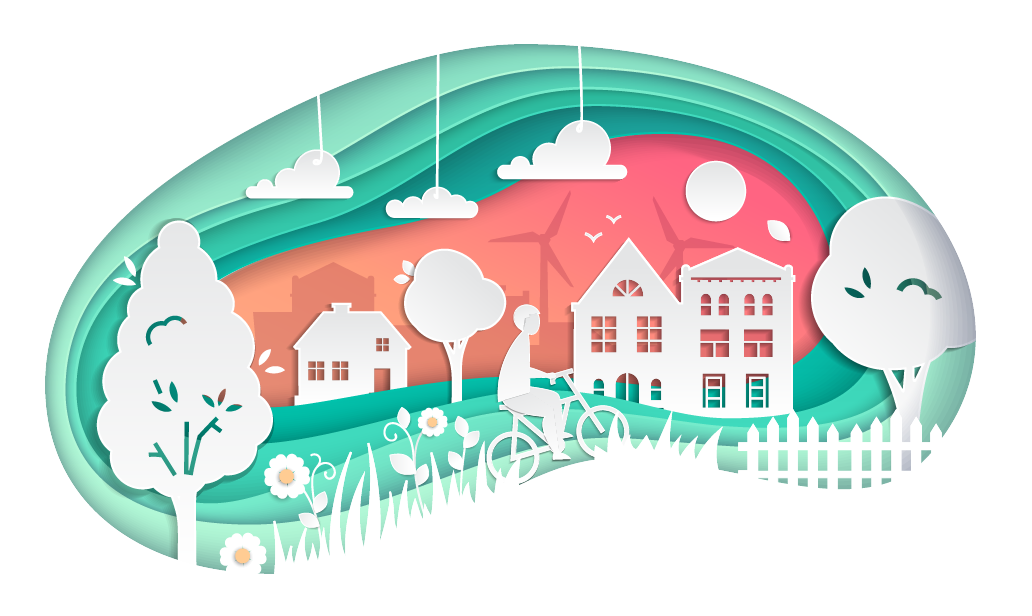As more people come to explore mindfulness, more and more people are also looking for ways to share mindfulness with their family—hoping it may reinforce their relationships, while bringing a little serenity, clarity, and peace into the lives of those closest to them. The joy of practicing with a child. The poignancy of meditating with a parent. The healing power of practicing together. And while it isn’t always fruitful—even with the best of intentions—to tell someone else why they should practice mindfulness, inviting someone to practice with you is different.
One approach that serves us well in this context is the SoBe Mindful method. It makes mindfulness highly accessible by drawing upon familiar aspects of the natural world around us. Just as this method lets us ground ourselves by connecting with nature—especially amid a pandemic, when so many of us have been staying indoors—it opens a doorway to practicing with loved ones and is adaptable for all ages and needs.
The Elements of Mindfulness
The SoBe Mindful method draws upon the elements of nature to help us connect with ourselves and our shared humanity. Four of these elements are the tree, the wind, clouds, and the sun. These were selected because they are found everywhere in the world. If it is daytime, take a look or walk outside and you are likely to see a tree, notice the wind blowing, witness clouds passing across the sky, and perceive the illumination and warmth of sunlight.
Each of these four primary elements are also found in us, as has been expressed through metaphor by many of the world’s wisdom traditions. Looking within reveals:
The Body—strong, steady, and alive—like a tree,
The Breath—flowing and animating the world—like the wind,
Thoughts and Feelings—arising and passing away—like clouds, and
Awareness and Warmth—spreading effortlessly—like the sun.
The symbolic connections between us and the natural world are endless. With children, these fundamental elements of nature—already part of early childhood learning—can inspire creative and fun games that cultivate focus, regulate emotions, and connect deeply to the world around us. For older children, teenagers, and adults, especially those new to mindfulness, the SoBe Mindful method can be an easy way to learn and remember the structure of basic mindfulness practices. It is also a way to practice without being guided by a teacher in the usual sense. Instead, we are guided by nature itself.
The symbolic connections between us and the natural world are endless.
I’d like to share with you a few different ways you can practice and adapt these principles to suit your mindfulness practice—simply for yourself, or for you and your family.
How to Practice: The Coming Together of Doing and Being
With mother nature as our teacher, each element cues two ways of relating to the present moment: doing and being. The first involves doing something that engages intention and helps settle the mind and body. For example, taking a few slower, deeper breaths. The second invokes a more observational lens with which to witness experience. For example, observing the sensations of the breath. The applications of this approach can vary widely depending on age, needs, ability, and depth of practice.
1. SoBe Mindful Together
Below is an example of a SoBe Mindful Breath Awareness practice that you can do with young children that tracks the four elements, moving from doing to being. It can be practiced sitting or standing and be as playful and dynamic or as structured and steady as you choose. Creativity and imagination—yours and your child’s—can inspire different movements and conversations. Practicing while outside in nature can be especially powerful. Take your time and savor each of the elements.
Sit upright and stable like a tree. Gently wiggle the toes, like roots digging into the soil. Slowly lift the arms to the side, as if they were branches and enjoy a gentle stretch. Wiggle the fingers like slowly fluttering leaves. Raise the arms like the uppermost branches of a tree, and sway from side to side.
Lower the arms, bringing them to rest just above the belly, as if holding a ball. Slowly move the hands outward as you take a slow and deep in-breath. Bring the hands back toward the belly as you exhale, slow and steady. Repeat this two times.
Lift your hands to eye level, one above the other and gently sweep them to the right and then the left, like clouds drifting across the sky, arising and passing away. Repeat this motion three times.
With palms facing out and fingers outstretched, lift your hands above your head, and then out to your side, spreading the warmth of sunlight. As you do, either out loud or just thinking the words, wish someone “May you be happy.” Then, the hands retrace their path back up and then down along your body as you wish yourself “May I be happy.” Finally, the hands lift up and out as they did the first time as you spread warmth and you wish “May everyone be happy.” The sun invites loving-kindness.
Upon completing the doing exercises, transition to being by bringing your arms to rest at your sides. (If you were standing, you may wish to sit down). You can imagine that the rising of the sun represents the dawning of awareness as you now turn your attention to any one of the elements, as each opens to a different practice. Here, we turn to the wind—if outside, you may feel and be inspired by a gentle breeze—as the practice becomes one with the sun and wind: an awareness of the breath practice. For example:

Close or lower the eyes and observe the sensations of the breath flowing through the body.

When you notice that your mind has wandered—that the clouds of thoughts and feelings have momentarily “blocked the sun”—return attention to the sensations of the breath.

2. Just Sitting
While it can be fun to move through (and move with) the elements in a playful and spontaneous way with children, it can also be refreshing to draw upon the elements when practicing on your own. You can enrich your own classic sitting practice by reflecting on these elements as you begin your practice, glancing out the window, or sitting outside. The elements are not merely guides; they are part of our community of living beings.
3. Guiding Imagery
Another way to adapt these practices for young children is to make it visual. Parents and teachers can create a little booklet by stapling together some folded papers and having their child draw elements on each page. For example, the drawings can proceed from a tree (adjust posture) to wind (slow, deep breath) to sun (loving-kindness), and then a combination of sun and wind (awareness of breath). Along with being a fun and creative way to practice together, you can also use these booklets to practice by yourself. As you slowly turn the pages and sit with an image, your child’s artwork guides you through a breath awareness practice. If your children are older, consider looking over their saved drawings and creating your own practice booklet. On a difficult or distracting day, this can encourage us in our practice, because of the feelings of love and connection it generates.
4. The SoBe Mindful Stop
When you are outdoors, perhaps walking from one place to the next, where so often we become lost in thought, you can deliberately stop or slow down and turn your attention to the environment. Whatever element becomes most salient can guide you to either a doing or being (or both) practice. For example, you feel the breeze and you take a few slower breaths, and then observe the sensations of breathing; as you see the clouds, you could turn your attention for a moment to notice what you are thinking or feeling, or remind yourself that “this too shall pass;” feeling the warmth of the sun, you wish someone happiness.
Waking Up
No matter how old we are, or whether we spend most of our day inside or out, we are all inseparable from our home: the earth, nature, in all its manifestations. When outside or looking out a window you will see trees, feel the breeze, notice clouds, and sense the sun. By recalling the connections between nature and our inner experience, through SoBe Mindful practices, you reinforce these connections. In time, the mundane moments when we’re on automatic pilot or lost in distraction will diminish, as the elements begin to spontaneously cue moments of mindful awakening.
I hope you find the SoBe Mindful method to be a helpful approach to developing or deepening your mindfulness practice, both on your own and with others.
READ MORE
Mindfulness for Kids
When we teach mindfulness to kids, we equip them with tools to build self-esteem, manage stress, and skillfully approach challenges. Explore our guide on how to introduce mindfulness and meditation to your children—at any age.
Read More
4 Simple Ways to Bring Nature Into Your Busy Life
Three garden experts share how they connect with nature and offer some tips on how you can bring a little greenery into your life.
Read More
Why Is Nature So Good for Your Mental Health?
A new study suggests that nature may make us happier and healthier because it inspires awe.
Read More
A Mindfulness Practice for Preschoolers That Connects Kids to Nature
A practice for teaching preschool children the basics of mindfulness by drawing on the elements of nature.
Read More











